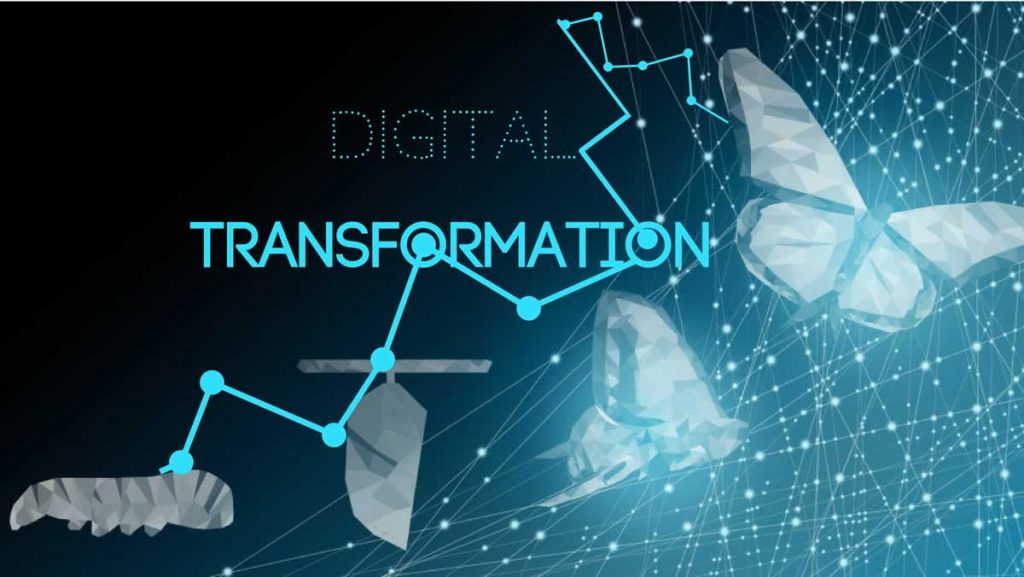Digital transformation is the change of an organization’s operating system by integrating digital technologies and processes across all levels of business. Digital transformation utilizes technologies aimed at creating value for its customers and acquiring the capacities to quickly adapt to changing circumstances.
Digital transformation involves the integration of digital technology into all facets of business, basically changing the mode of operation and how value is delivered to customers. Digital transformation is essential for all businesses, ranging from the small to the enterprise.
This transformation starts and ends with how you think about, and relate with, customers. For small startup businesses, there’s no need to set up your business processes and transform them later. You can future-proof your organization from the beginning. You can do thinking, planning, and building digitally.
A number of business leaders do not know what digital transformation means. They have no clue about the specific steps to take to in transforming digitally. What business strategy you need to implement for a change as you transform.
Digital Business Transformation

Digital Business Transformation is an organizational change which makes use of digital technologies and business models to enhance performance. Digital technologies are not as important as transforming businesses, the essence of technology is to support various business models.
Every business must have a plan before considering a Digital Business Transformation. You must be quite aware of why you need to transform, what you need to transform, and how to execute the transformation.
Not all businesses can afford companies Digital Business Transformation because it’s expensive, difficult to manage, and can disrupt the company unnecessarily. Such companies should continue with what they have been, better and cheaper.
Digital Business Transformation Areas

Business activities/functions: Areas in business such as marketing, operations, human resources, administration, customer service, etc. can be digitally transformed.
Business processes: Several business operations, activities, undertaken to accomplish business goals. A lot of processes such as business process management, business process optimization, and business process automation are involved. Business process optimization is quite important in digital transformation strategies.
Business models: Various models are usually designed for digital transformation ranging from the go-to-market approach and value proposition to the ways it seeks to make money and effectively transform its core business.
Customer, worker, and partner approaches: Digital transformation involves people, strategy, and technology. The behavioral change and, expectations, as well as the needs of any stakeholder, are important. This shows in many change subprojects which are usually customer-centered. Also, user experience, worker empowerment, new workplace models, changing channel partner dynamics, etc. all come to play.
Business asset management: The focus is mainly on traditional assets but, largely, on less tangible assets which include information and customers. Customers and information are to be treated as real assets in all areas.
What does a digital transformation framework look like?
Digital transformation is changing business methodology and, in some cases, building up new types of businesses. Digital transformation has enabled companies to take a step back and revisit everything they do, ranging from internal systems to interactions with customers both online and in person.
Digital transformation varies depending on the organization’s challenges demands and goals. There are a few constant elements among existing case studies and published frameworks that all business and technology leaders should take note of before commencing digital transformation.
These are some digital transformation elements:
- Customer experience
- Operational agility
- Culture and leadership
- Workforce enablement
- Digital technology integration
Four digital transformation realities we want to emphasize:
- Business/IT relationship is important (the gap must be closed between business and IT, you have to focus on the same goals and do not overlook the role of IT).
- Digital leaders share similar DNA and path to digital transformation shows common features.
- Every industry is impacted as well as Customers, employees, partners, nor competitors, as well as new, disruptive players, who will wait for business to keep up the pace.
- Digital transformation starts from the top Often it’s the CEO, the Chief Digital Officer but it also depends on whom you ask.
Digitalization is utilizing digital data to simplify how you work.
The process of utilizing digitized information to create avenues of working simpler and more efficient is called digitalization. Digitalization doesn’t only focus on changing how you do business or creating new types of businesses but it is also about keeping on, faster, and better accessibility of data.
Customer records are easily and quickly retrievable via computer because of digitalization. The basic methodology of customer service hasn’t changed, but the process of fielding an inquiry, searching for relevant data has changed.
As digital technology evolved, a lot of people have started developing ideas for utilizing business technology in new ways, and not just to do the old things faster. This happens when the idea of digital transformation began to take shape.
We can help you get more out of your business through digital transformation. Call +230 5472 9515 for more information.

